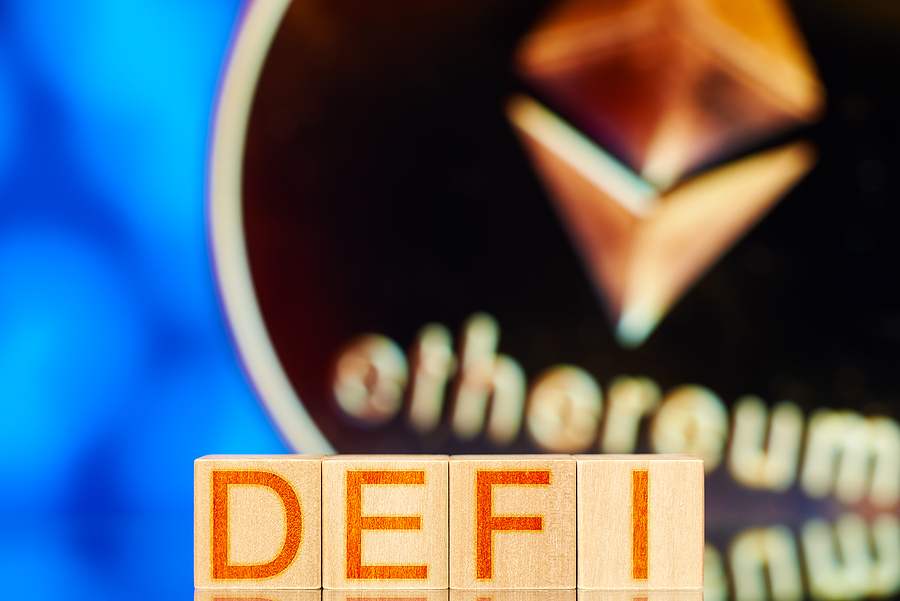Decentralized finance, or DeFi, has emerged as a revolutionary force in the world of finance, offering an alternative to traditional centralized financial systems. Unlike traditional finance, which relies on intermediaries such as banks and brokers, DeFi operates on blockchain technology, allowing for peer-to-peer transactions without the need for intermediaries. This decentralized nature of DeFi provides users with greater control over their finances, lower transaction costs, and increased accessibility. Stay updated and educated with immediateturbo.com which is an educational firm connecting investors and educational experts.
Growth of DeFi
The growth of the DeFi market has been nothing short of remarkable. In recent years, the total value locked (TVL) in DeFi protocols has soared, reaching billions of dollars. According to data from DeFi Pulse, the TVL in DeFi protocols surpassed $100 billion in 2023, marking a significant milestone for the industry. This exponential growth can be attributed to various factors, including the increasing adoption of cryptocurrencies, the rise of decentralized exchanges (DEXs), and the emergence of innovative DeFi protocols.
Key DeFi Trends
One of the key trends driving the growth of DeFi is yield farming and liquidity mining. These strategies involve providing liquidity to DeFi protocols in exchange for rewards, such as tokens or interest payments. Yield farming has become increasingly popular among DeFi users seeking to maximize their returns on invested capital.
Decentralized exchanges (DEXs) have also played a crucial role in the growth of DeFi. DEXs allow users to trade cryptocurrencies directly with one another without the need for intermediaries. This peer-to-peer trading model offers greater privacy, security, and control over assets compared to centralized exchanges.
Another trend worth noting is the intersection of non-fungible tokens (NFTs) and DeFi. NFTs, which are unique digital assets represented on the blockchain, have gained significant traction in recent years, with high-profile sales capturing mainstream attention. DeFi protocols are increasingly incorporating NFTs into their platforms, enabling users to collateralize NFTs and access liquidity.
Challenges and Risks
While DeFi offers numerous benefits, it also presents unique challenges and risks. One of the primary concerns is the security of smart contracts. Smart contracts, which are self-executing contracts with the terms of the agreement directly written into code, are vulnerable to bugs and exploits. Several high-profile hacks and exploits have occurred in the DeFi space, highlighting the need for robust security measures.
Regulatory challenges also pose a significant risk to the growth of DeFi. As DeFi continues to gain traction, regulators around the world are paying closer attention to its potential impact on financial stability and consumer protection. Increased regulatory scrutiny could stifle innovation and limit the growth of the DeFi industry.
In addition to security and regulatory risks, scalability remains a pressing challenge for DeFi protocols. The Ethereum blockchain, which is home to the majority of DeFi projects, has struggled to scale effectively, leading to network congestion and high transaction fees. Scalability solutions such as layer 2 scaling and alternative blockchains are being developed to address these issues.
Future of DeFi
Despite the challenges and risks, the future outlook for DeFi remains optimistic. One potential trend to watch is interoperability, which refers to the ability of different DeFi protocols to communicate and interact with one another seamlessly. Interoperability would enable users to access a broader range of DeFi services and assets, leading to increased adoption and innovation.
Institutional adoption is another trend that could shape the future of DeFi. As institutional investors increasingly recognize the potential of blockchain technology and DeFi protocols, they may allocate capital to DeFi projects, driving further growth and mainstream acceptance.
Scalability solutions are also expected to play a crucial role in the future of DeFi. Projects such as Ethereum 2.0 and layer 2 scaling solutions aim to improve the scalability and efficiency of the Ethereum blockchain, making it more suitable for DeFi applications.
Innovations in DeFi
Several innovations are reshaping the DeFi landscape and driving further growth and adoption. Automated market makers (AMMs), for example, have revolutionized decentralized trading by replacing traditional order books with algorithmically determined prices based on supply and demand. AMMs provide liquidity to DeFi markets and enable users to trade assets seamlessly.
Cross-chain interoperability is another area of innovation in DeFi. Projects such as Polkadot and Cosmos are working on interoperability solutions that allow different blockchains to communicate and share data, opening up new possibilities for cross-chain DeFi applications.
Governance tokens have also emerged as a significant innovation in DeFi. These tokens represent ownership in decentralized protocols and give holders the right to vote on protocol upgrades and governance decisions. Governance tokens enable decentralized governance, allowing users to participate in the decision-making process and shape the future direction of DeFi protocols.
Conclusion
In conclusion, DeFi has emerged as a disruptive force in the world of finance, offering a decentralized alternative to traditional financial systems. Despite facing challenges and risks, the future outlook for DeFi remains optimistic, with continued innovation and growth expected in the years to come. By staying informed about key trends and developments in the DeFi space, investors and users can navigate the rapidly evolving landscape and capitalize on the opportunities presented by decentralized finance.
Image Source: BigStockPhoto.com (Licensed)
Disclaimer
Cryptocurrency products are unregulated and can be highly risky. There may be no regulatory recourse for any loss from such transactions.
The Information on this website is provided for educational, informational, and entertainment purposes only, without any express or implied warranty of any kind, including warranties of accuracy, completeness, or fitness for any particular purpose.
The Information contained in or provided from or through this website and related social media posts is not intended to be and does not constitute financial advice, investment advice, trading advice, or any other advice.
The Information on this website and provided from or through this website is general in nature and is not specific to you the user or anyone else. You should not make any decision, financial, investment, trading or otherwise, based on any of the information presented on this website without undertaking independent due diligence and consultation with a professional broker or financial advisory.
You understand that you are using any and all Information available on or through this website at your own risk.
The trading of Bitcoins, alternative cryptocurrencies has potential rewards, and it also has potential risks involved. Trading may not be suitable for all people. Anyone wishing to invest should seek his or her own independent financial or professional advice.
Related Categories: Cryptocurrency, Reviews






